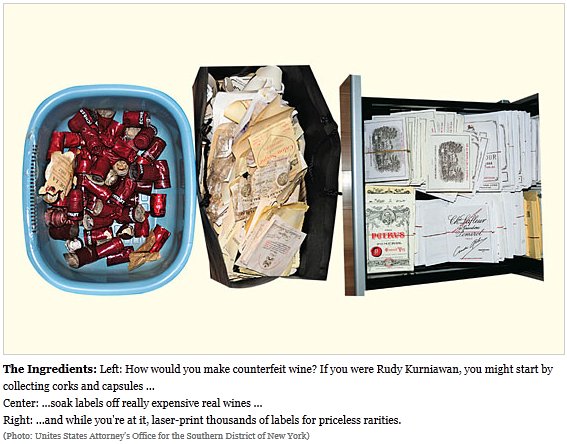Storing a few old bottles in your cellar? Not as old as these bottles:
Israel isn’t particularly famous for its wine today, but four thousand years ago, during the Bronze Age, vineyards in the region produced vintages that were prized throughout the Mediterranean and imported by the Egyptian elite.
Last summer, archaeologists discovered a rare time capsule of this ancient drinking culture: the world’s oldest known wine cellar, found in the ruins of a sprawling palatial compound in Upper Galilee.
The mud-brick walls of the room seem to have crumbled suddenly, perhaps during an earthquake. Whatever happened, no one came to salvage the 40 wine jars inside after the collapse; luckily for archaeologists, the cellar was left untouched for centuries. [In Images: An Ancient Palace Wine Cellar]
Excavators at the site took samples of the residue inside the jars. In a new study published today (Aug. 27) in the journal PLOS ONE, the researchers describe what their chemical analysis turned up: biomarkers of wine and herbal additives that were mixed into the drink, including mint, cinnamon and juniper.
[…]
The residue from all 32 jars sampled in the study contained tartaric acid, one of the main acids in wine. In all but three jars, the researchers found syringic acid, a marker of red wine. The absence of syringic acid in those three jars may indicate that they contained some of the earliest examples of white wine, which got its start later than red wine, Koh said.
The researchers found signatures of pine resin, which has powerful antibacterial properties and was likely added at the vineyard to help preserve the wine. Scientists also found traces of cedar, which may have come from wooden beams used during the wine-pressing process.
The researchers noticed that the cellar’s simplest wines, those with only resin added, were typically found in the jars lined up in a row against the wall near the outdoor entrance to the room. But the wines with the more complex additives were generally found in jars near a platform in the middle of the cellar and two narrow rooms leading to the banquet hall next door. Koh and colleagues believe the wine would have been brought from the countryside into the cellar, where a wine master would have mixed in honey and herbs like juniper and mint before a meal.
As for the taste, Koh said the ancient booze may have resembled modern retsina, a somewhat divisive Greek wine flavored with pine resin — described by detractors as having a note of turpentine. (Koh said he and his colleagues usually hear two different kinds of remarks about the ancient wine: Some say, “I would love to drink this wine,” while others say, “It must have just tasted like vinegar with twigs in it.”)





